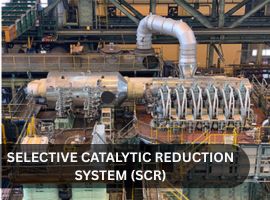
Aim:
To provide marine engineers, technical officers, and shipboard personnel with in-depth knowledge and practical skills related to the operation, maintenance, and regulatory compliance of marine Selective Catalytic Reduction (SCR) systems for NOx emission control, in accordance with IMO MARPOL Annex VI and Tier III requirements.
Objectives:
Selective Catalytic Reduction System (SCR) – Training Outcomes
- Understand International Regulations
- Interpret IMO MARPOL Annex VI requirements concerning NOx emissions.
- Differentiate between Tier I, II, and III NOx limits and relevant Emission Control Areas (NECAs).
- Explain SCR Systems
- Describe the working principles of SCR, including catalyst functions and ammonia/urea dosing.
- Identify key components such as reactors, dosing units, catalysts, sensors, and control panels.
- Operate SCR Configurations
- Understand start-up, normal operation, and shutdown procedures.
- Monitor NOx emissions and ensure compliance with Tier III requirements.
- Apply Safe Operational Practices
- Follow safety protocols during ammonia/urea handling and dosing.
- Manage bypass systems and emergency procedures for SCR units.
- Perform Maintenance Tasks
- Conduct catalyst inspections, cleaning, and replacement.
- Calibrate sensors and maintain dosing systems.
- Manage waste products such as spent catalysts responsibly.
- Mitigate Hazards
- Identify and control risks such as ammonia slip, toxic gas exposure, catalyst fouling, and backpressure.
- Implement safety procedures during port state inspections and system failures.
- Integrate Systems with Engine Controls
- Understand automation and monitoring integration between SCR systems and the ship’s engine management system.
- Assess Manufacturer-Specific Systems
- Compare and evaluate commercial SCR systems from leading OEMs such as MAN, Wärtsilä, and ABB.
- Teacher: AIMS MARITIME

